5 religious sites you need to see in East Asia
East Asia comes out as one of the most religiously diverse region on earth and this diversity shows in some unique architectural wonders.
There is obviously a number of astonishing religious sites throughout the world, each deserving of equal respect, but most of us are probably not as familiar with religions such as Taoism or Shintoism as we are with more widespread religions such as Christianity or Islam. Visiting East Asia is therefore the right time to learn more about those particular forms of spirituality as well as admiring splendid architecture you will not see anywhere else in the world.
Here is a personal take on 5 amazing sacred sites you should see when visiting East Asia.
1. The Temple of Heaven in Beijing, China
A view on the iconic Hallo of Prayer for Good Harvests.
This sacred site was constructed during the 15th century under the reign of the Yongle Emperor, a highly significant historical figure also responsible for bringing the Forbidden City to the world and this fact in itself tells a lot about the magnificence of the Temple of Heaven.
The Temple of Heaven is believed to be a Taoist site, although heaven worship was an ancient belief that predated it in China. Taoism is probably most known around the world for its credited founder, Lao-Tseu, but it is a religious and philosophical tradition that played a central role in the Chinese society with millions of people in China still identifying to it. Some of you might even practice some of its principles without fully knowing it as Qigong, a holistic practice now fairly popular across the world, has strong ties with Taoism and plays an important role within it.
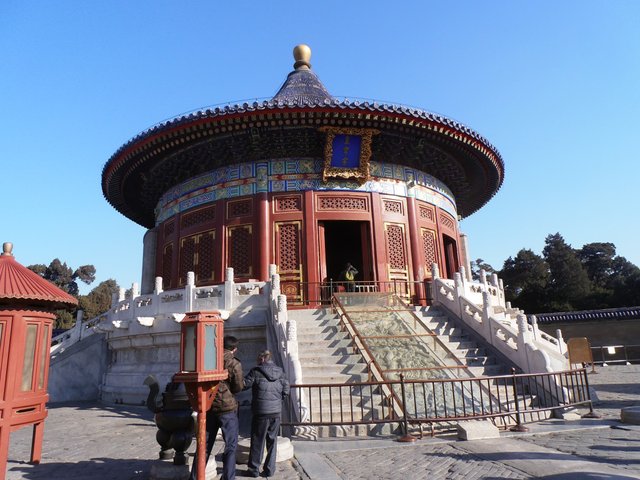
The smaller Imperial Vault of Heaven, part of the large compound known as the Temple of Heaven.
The name of this sacred place is a bit misleading as this site is actually more of a religious compound with several buildings scattered within the Tiantan Park. But it is the Hall of Prayer for Good Harvests, a circular building found at its core, that strikes visitors the most with its vivid colours and perfect harmony.
The Hall has become one of the most prized landmarks of Beijing. It is often used in tourism ad campaigns and it is not hard to understand why when you see it in real life as it is one of the most overwhelmingly beautiful building you will ever see. There are other similar-looking buildings around the hall but on a smaller scale, such as the Imperial Vault of Heaven.
The Tiantan Park could also be a reason enough to visit, especially early in the morning when locals gather all around it. Spend some time taking a walk in the park and you will witness choirs singing, groups of elders stretching or dancing enthusiastically, locals doing calligraphy with drops of morning dew. It is a really poetic moment that will make you feel like you’ve entered a parallel serene universe, away from the frenzy of the Chinese capital.
Temporary calligraphy painted every morning by local elderly.
- Entrance Fee: Ticket 35 yuan (about U$5)
- Get There: Closest subway stop at Tiantandongmen
2. The Bayon in Angkor near Siem Reap, Cambodia
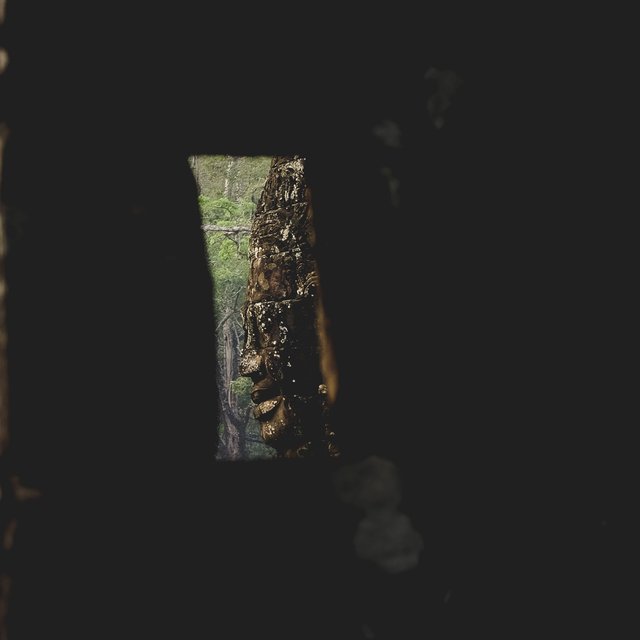
One of the many face of the Bayon at dawn.
Angkor might very well be one of the most evocative places in Asia, and probably in the world. It is hard to pick only one temple to highlight when you are overwhelmed by so much greatness in one place you can’t remember it all. But the Bayon is definitely something else.
Built in the late 12th century, the Bayon is a striking Khmer temple influenced by several monarchs during the course of history. It was first a Buddhist temple constructed under the reign of Jayavarman VII, who made it one of its more prominent official sacred sites as it stood at the centre of its capital, Angkor Thom. Later on, the Bayon received several additions and its overall architecture got influenced by Hindu and Theravada Buddhist traditions.
The iconic faces of the smiling Buddhas.
The Bayon’s most impressive feature has to be the countless faces of Buddha that enrich its towers and make it stand out from all the other temples. Try to come and visit it as early as you can to get the most of its amazing and peaceful scenery. With visiting hours starting at 5am, it is highly recommended for you to head for it straightaway to be sure to be blown away by its beauty under the rising sun. You will also be paid a visit by lots of monkeys so be sure you do not have any plastic bottle with you at the time or any type of food, unless you’re eager to pick up a fight.
The Bayon is also renowned for its intricate bas-reliefs depicting scenes of the everyday life under the Khmer empire as well as mythical events. You could truly spend hours admiring how different they are from one another but it might be best to read about the history of the place beforehand if you really want to make the most of it.
- Entrance Fee: US$20 for a 1-day pass to Angkor or US$40 for 3 days
- Get There: Rent a Bike for US$1 a day and head to Angkor Thom, beyond Angkor Wat on the left
3. Prambanan and Borobudur near Yogyakarta, Indonesia
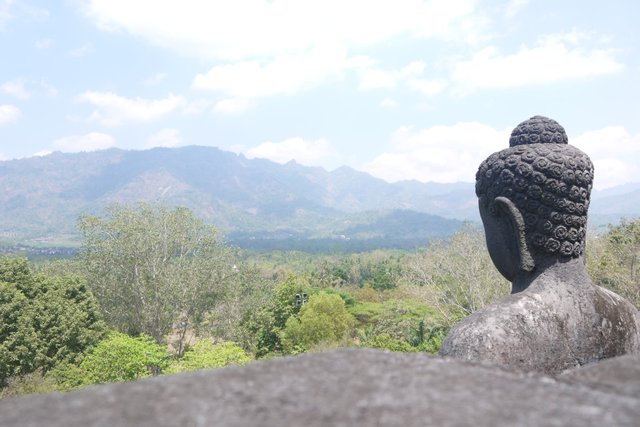
The Buddha watches over the jungle surrounding Borobudur.
It is hard to make a decision between those two significant Indonesian sacred sites so why make a decision at all? Both were designated UNESCO World Heritage Sites and both are equally as compelling.
Prambanan was built during the 9th century as a Hindu compound while Borobudur was constructed at the same period of time but as a Buddhist temple, being one of the world’s largest Buddhist temples.
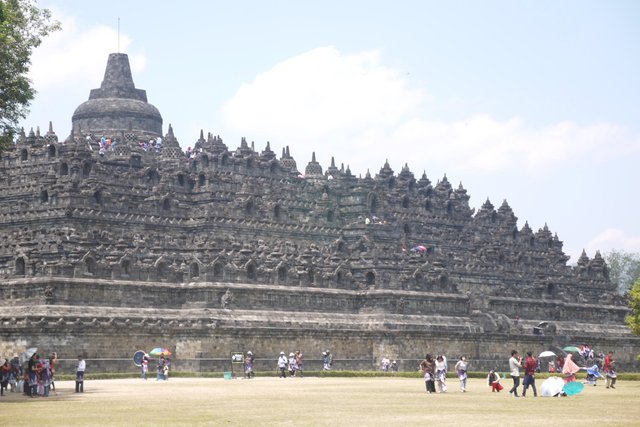
The lace-like architecture of the largest Buddhist compound in the world.
Prambanan is somehow reminiscent of Angkor Wat in Cambodia and its history was also one of abandonment and rediscovery in the 19th century, which explains why some parts of the compound seem fairly damaged while others are still undergoing renovation. It might have lost some of its grandeur over time, even though its bas-reliefs are amazingly well-preserved, but it remains an incredible site to visit, especially early in the morning before dozens of coaches full of tourists arrive at the scene.
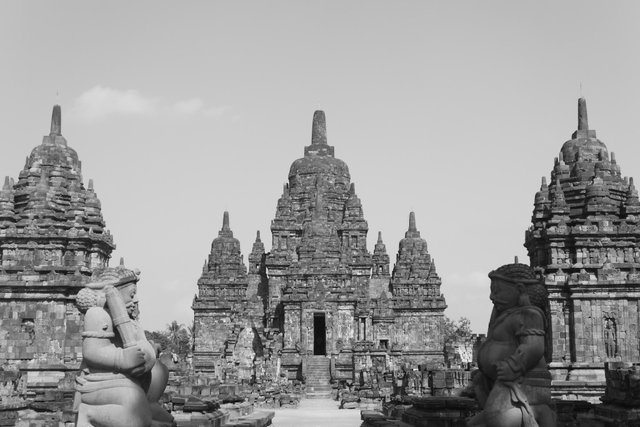
A lesser known part of the Prambanan compound, further into the park.
Borobudur is perhaps the most impressive of the two as it mainly consists of one huge building, known to be the largest Buddhist temple in the world. Pay extra attention to its intricate bas-reliefs, which are the most complete set of Buddhist reliefs in the world. The structure is composed of three different levels, each representing a level of Buddhist philosophy, and is also adorned with statues of the Buddha. But its most unique feature is the 72 stupas that cover its rooftop, from which you will able to take a look at some of the lush jungle that surrounds the temple.
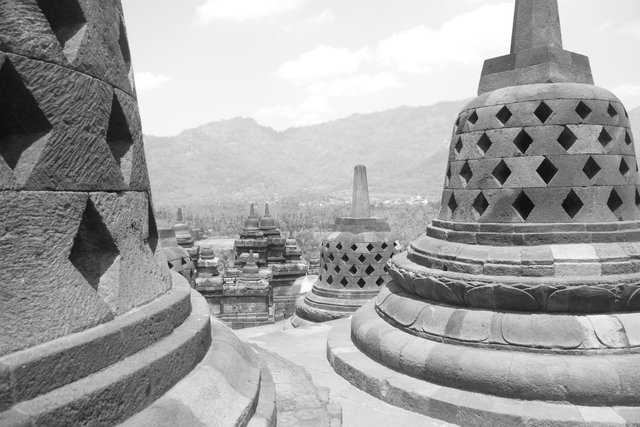
Find yourself wandering around the stupas before you leave the site and the bubble bursts.
Borobodur and Prambanan definitely should be on your bucket list but not only because they have been described as some of the new wonders of the world. The nature that surrounds both sites is incredible too but most importantly, although there are a lot of foreign tourists all around Indonesia, locals are some of the most welcoming people you will ever find and they will make you feel even more at home in their amazing country. Do not be surprised then if they come to you to ask for a picture or a chat.
- Entrance Fee: Combined Ticket at US$30
- Get There: Rent a Motorbike
4. Fushimi Inari Taisha near Kyoto, Japan
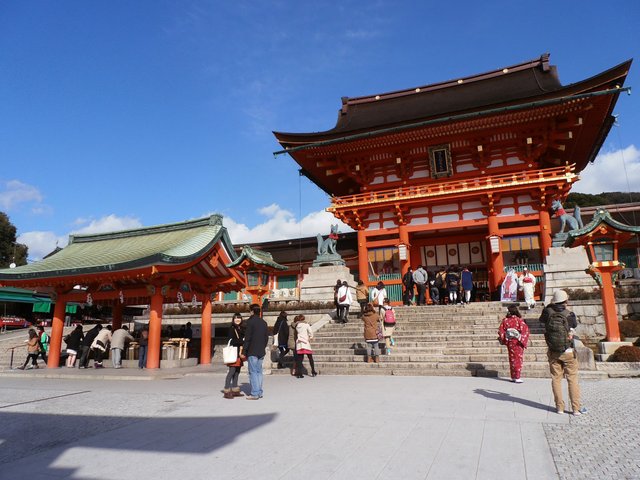
Entrance to the temple before accessing the vermillion gates on the left side of the main building.
Japan is known the world over for its refined and sophisticated traditions, born of a civilization that received influence from neighbouring China and South Korea before keeping away from foreign interventions for centuries to blend these influences into its own unique, unparalleled culture. Most sites you will see in Japan will therefore be widely different from anything else you’ve seen before and that includes sacred sites.
Fushimi Inari Taisha Shrine was built around 711 and is now the largest Shinto shrine in Japan. Shinto is an intrinsic Japanese religion closely tied with the history of the Japanese people and their strong bond with nature.
The Japanese have a different approach to the concept of religion though as they also practice Buddhism and Christianity to some extent. It is common practice to have a Buddhist altar inside the house but ceremonies following the birth of a child are held in a Shinto temple while most funeral services are held in a Buddhist style and many modern Japanese get married in church.
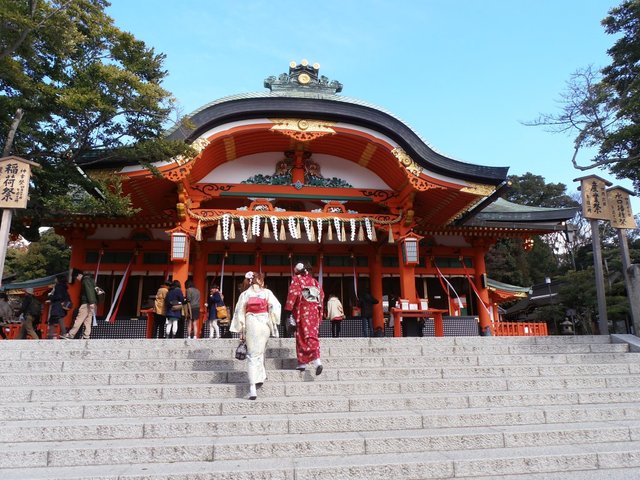
There is therefore a wide range of Buddhist temples as well as Shinto shrines in Japan, Fushimi Inari being one of the most prominent. A good way to find out in which kind of temple you are stepping in, aside from the obvious differences in rituals, style of prayers and paintings, is to identify the name that qualify Shinto and Buddhist sites in Japanese, which are 神社 (Jinja) or 神宮(Jingu) for one and 寺 (Tera, also pronounced Ji) for the other. Have fun trying to decipher the signs!
It is hard to decide which sacred site deserves more attention than the other as Japan is full of brilliant and scenic religious sites, but Fushimi Inari is one of the first examples that come to mind when mentioning Japanese temples. It is not the most ancient however, yet there is some magic captured in the thousands of iconic red torii (Japanese gates) that pave its way.
Enter the maze and forget about the real world.
You can climb to the top of the mountain following the flight of steps in the midst of the tens of thousands of red gates, carved with a variety of names. There is nothing much to see at the top though but it can be worth taking up the challenge. If you pay attention to the upper part of the torii, you will also see a few stones arranged in different ways. It is a tradition to try and leave a stone on top of the gates so that your wish may come true one day, so give it a try.
- Entrance Fee: Free
- Get There: JR Nara Line or Keihai Railway, stop at Inari Station
5. Bulguksa Temple in Gyeongju, South Korea
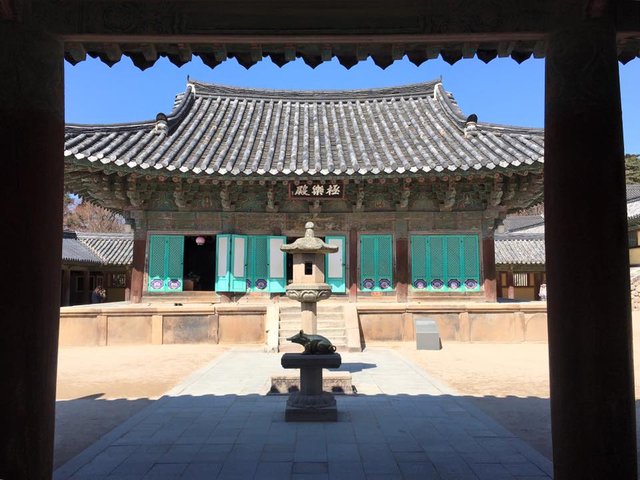
Small stone pagoda in the middle of a side courtyard.
Bulguksa Temple is located a few miles away from the city of Gyeongju, former capital of Korea under the Silla era and known as one of the cultural jewel of modern-day South Korea. The temple has been listed as a UNESCO World Heritage Site and shelters some of the country’s most prized national treasures, including ancient stone pagodas.
Located on Mount Toham, the temple is rather easy to reach as a whole and offers great views on the surrounding countryside, although the scenery is much better at other mountain temples such as Beomeosa in Busan. It remains one of the most iconic Korean temples for its historic significance and the richness of its architecture.
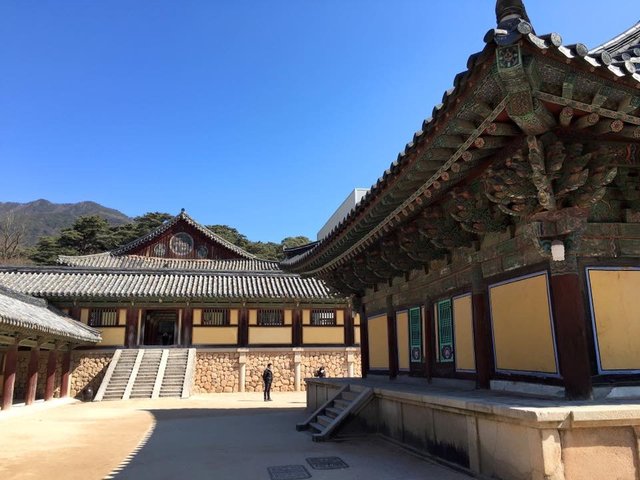
Richly decorated wooden roof.
Dating back from as early as the 6th century, the Bulguksa Temple has known various stages as it was only completed two centuries later by the Silla Royal Court before being reconstructed under two of the most significant dynasties in Korean history, the Goryeo and the Joseon dynasty. The building we can now visit has been restored in the 1960s along with the Seokguram Grotto, part of the Bulguksa complex but situated a bit further. The main Buddha within the Grotto is one of the best known work of art in Korea.
Just like every other Korean temple, Bulguksa strikes the eye with its brightcolours, elevated by their dominant of splendid green and red. Pay extra attention to the details on the roofs and the pillars of each temple as they are a treat for every photograph around. Besides, Bulguksa might have been renovated in the past century but some of its buildings remain more classical than anything you can see in Seoul (although the Changdeok palace and Huwon garden absolutely deserves a place on your bucket list too)
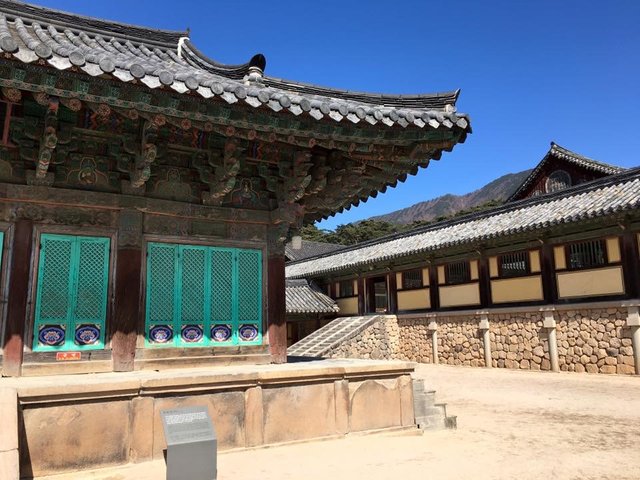
- Entrance Fee: 5000 won (around US$4.5)
- Get There: Bus 10 from Gyeongju Bus Terminal